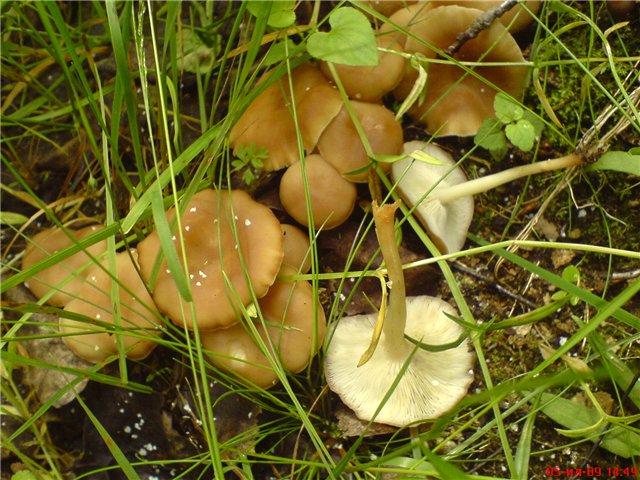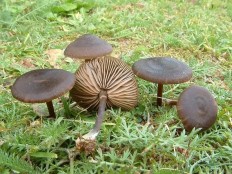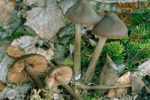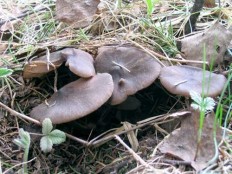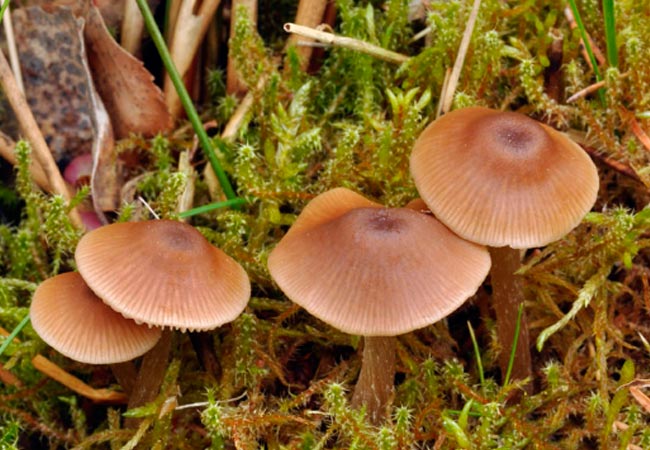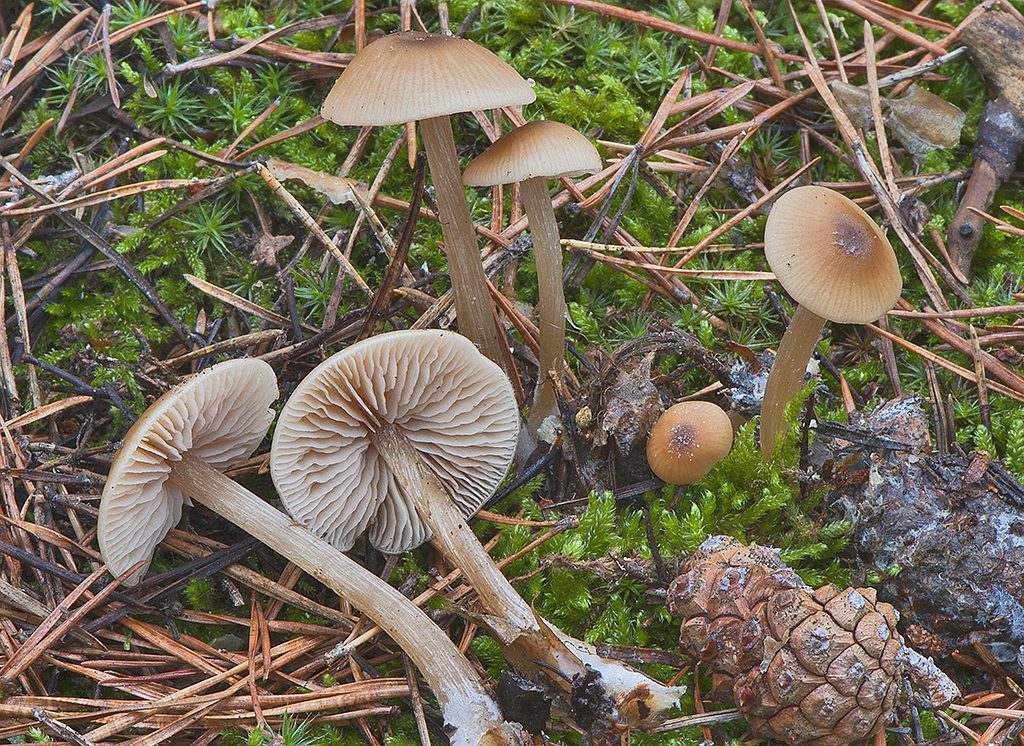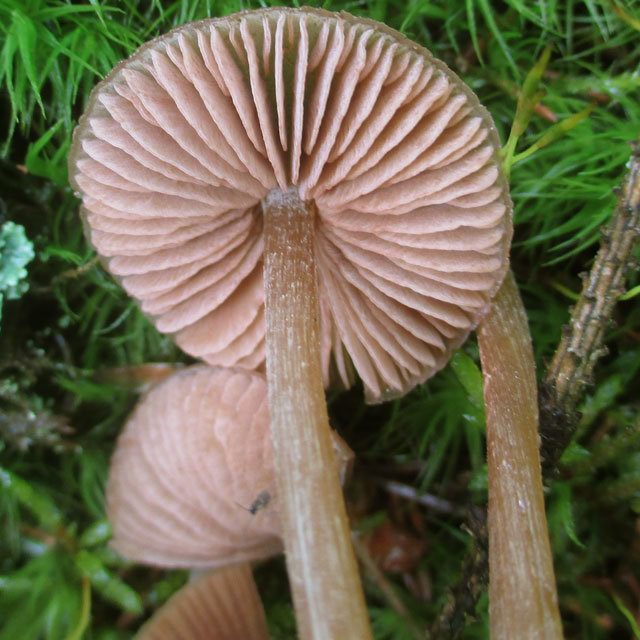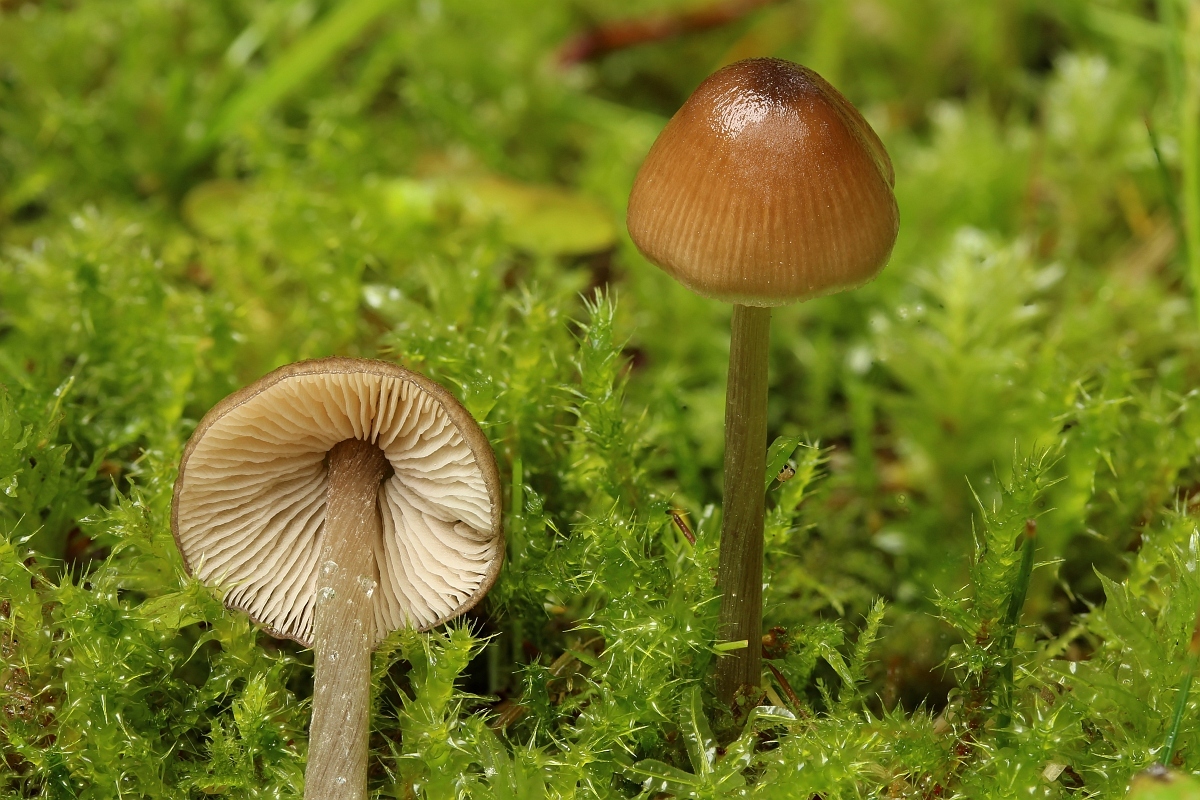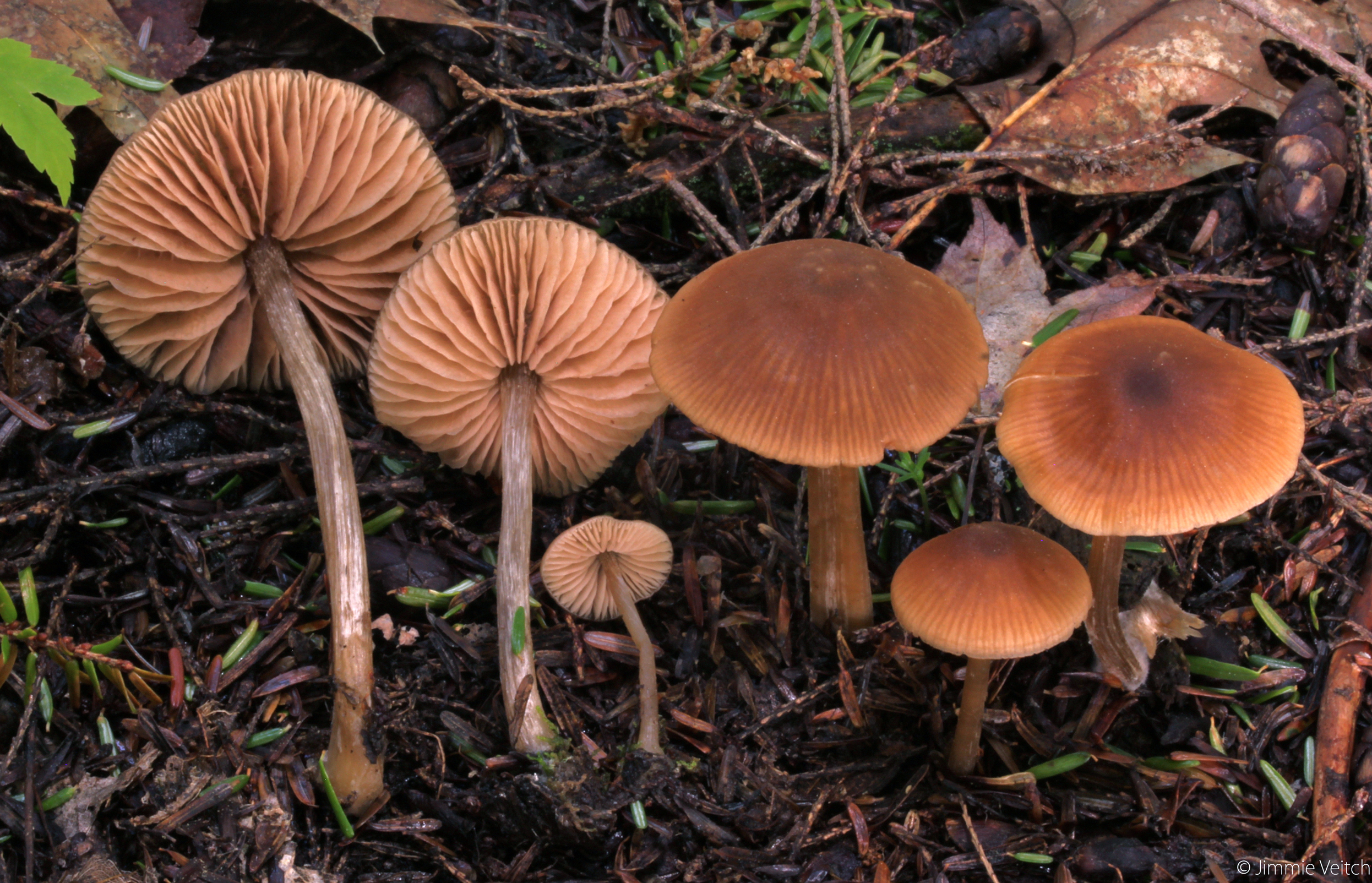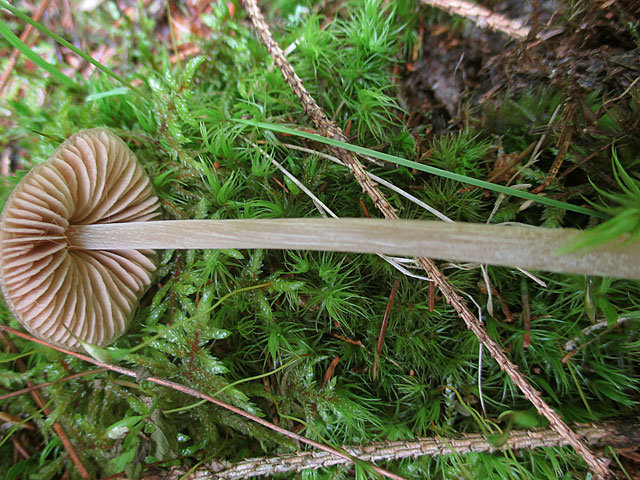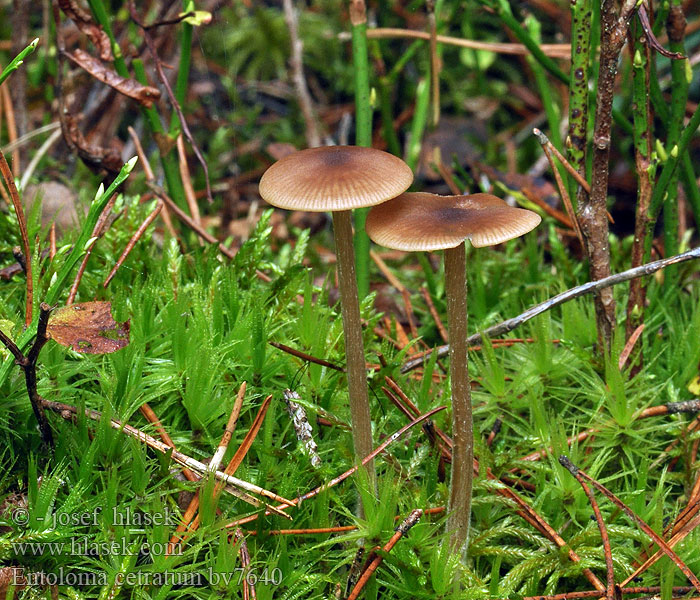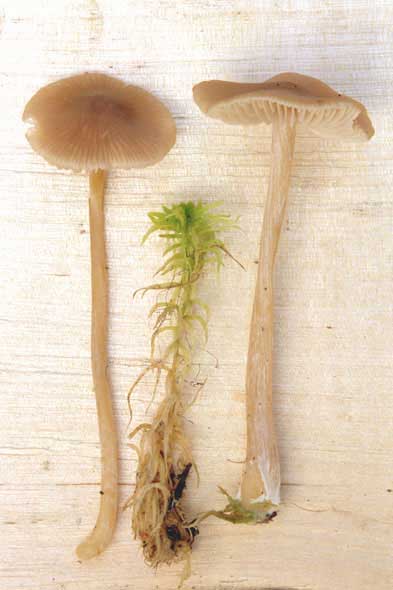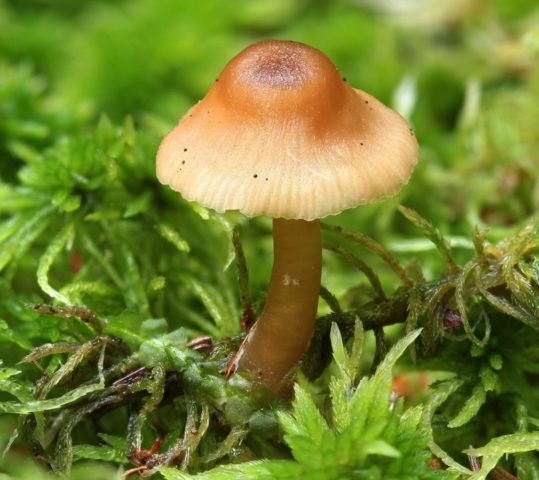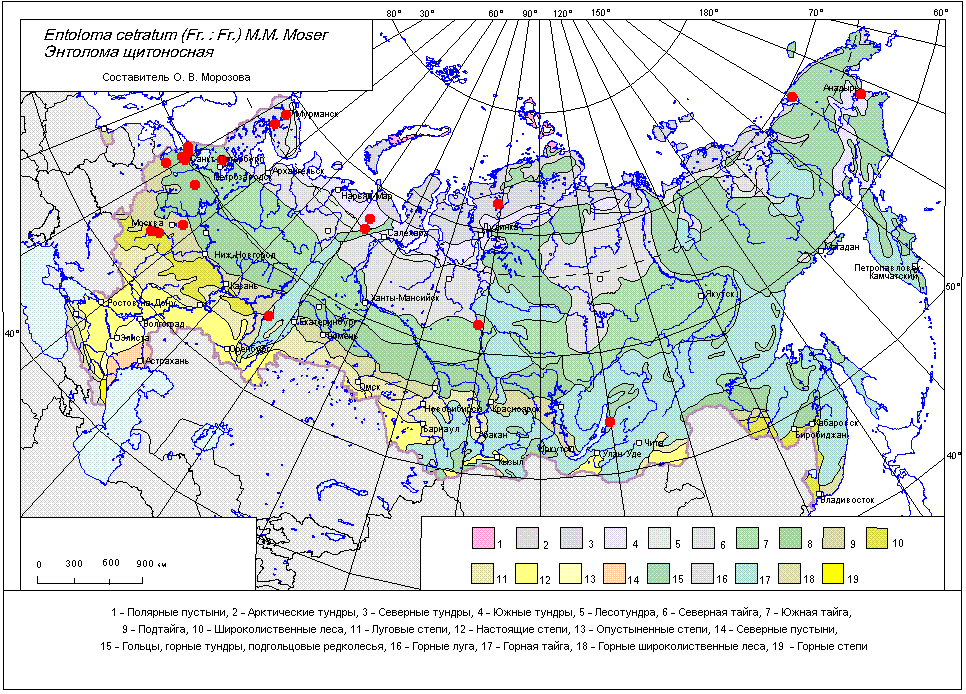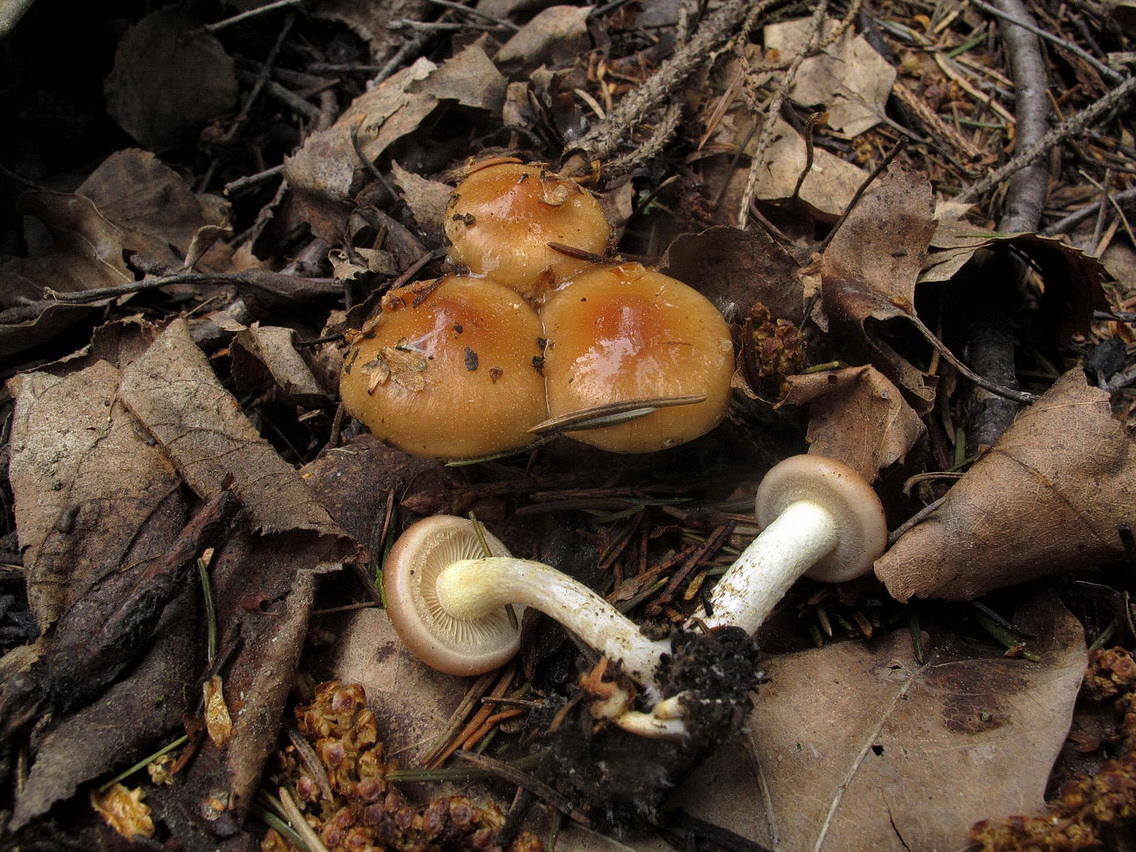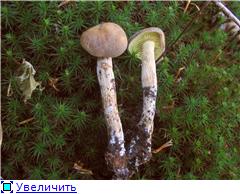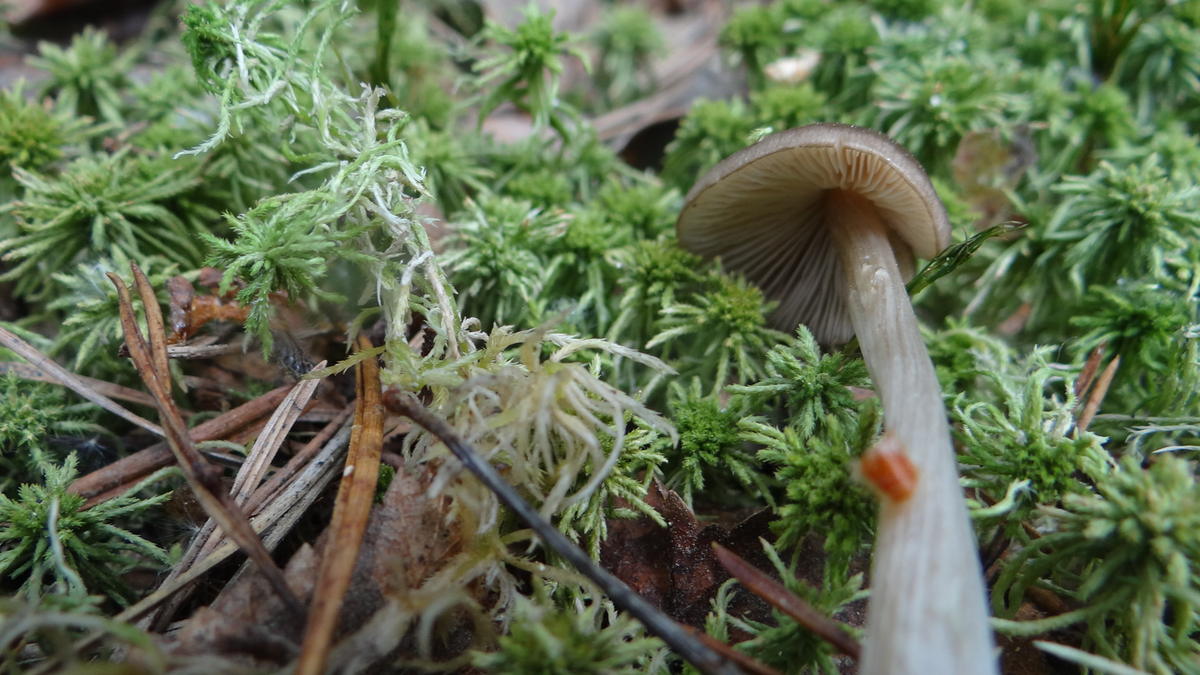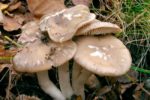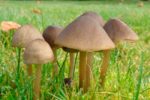Primary processing and preparation
Garden entoloma is conditionally edible. The collected fruit bodies are completely freed from forest litter and either dried or washed well, then boiled for 20 minutes. The broth is drained, and the prepared mushrooms are fried, salted and pickled. In Western Europe, such dishes are particularly popular.
In order to collect and safely prepare a garden entholoma, it is necessary to confidently distinguish it from similar poisonous relatives, especially from the most dangerous twin - tin entoloma. Before culinary use, the harvested mushroom crop must be boiled.
Description
The conditionally edible garden entoloma (Entoloma clypeatum), belonging to the genus Entoloma of the family of entolomaceous, has synonymous names that emphasize its properties, structural features and settlement:
- entoloma edible;
- thyroid rosacea;
- entoloma thyroid;
- entoloma corymbose;
- forest entoloma;
- entoloma thorny;
- podlivnik;
- podabrikosovik;
- podkernik.
The species is characterized by the following distinctive external features:
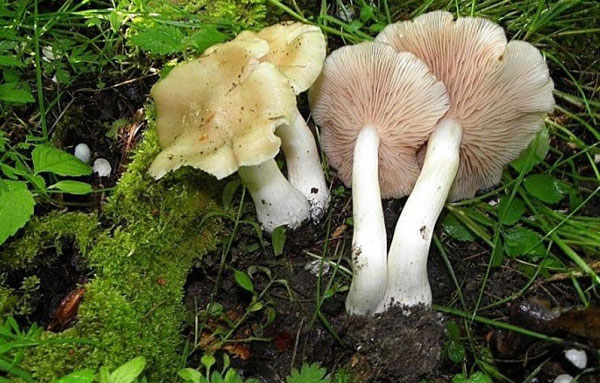
- bell-conical, convex cap becomes prostrate as it develops. The edges are tucked at first, then unevenly. A wide, thickened, smoothed tubercle remains in the center. The color can be pale grayish, as well as brownish-gray and gray-brown. At high humidity, the surface of the cap is sticky, its color becomes more saturated and darker, in dry weather the skin is silky-fibrous, the color brightens. The characteristic diameter is 7-10 cm, sometimes 12 cm;
- rather sparse and wide, adherent toothed plates in young fruiting bodies are painted white, which then quickly turn pink. The edges of the plates are unevenly serrated, the length is uneven;
- light pink spores;
- cylindrical longitudinally ribbed leg light, with a gray or pink tinge, whitish at a slightly widened base and furrowed at the border with the cap. At an early stage of growth, it is solid; in mature fruiting bodies, it is hollow, often curved, sometimes twisted. Its thickness occasionally increases to 4 cm, and on average is 1-2 cm. Length - from 5 to 12 cm;
- soft but dense fibrous flesh is whitish. Has a mild powdery odor and the same taste.
Similar types and differences from them
Garden entoloma is similar to close relatives from the same family:
- conditionally edible pale brown entoloma (Entoloma saepiun) with the same terms of fruiting and places of settlement. These mushrooms are distinguished by a brown cap with a yellowish, brownish and gray tint;
- poisonous tin entoloma or poisonous (Entoloma sinuatum), which has practically the same color and shape. It is all the more necessary to know the distinctive features of a dangerous species that grows in the southern regions of the forest zone, has a much larger size (the maximum diameter of the cap is 20-25 cm), the yellowish color of the plates in young mushrooms and the pulp with a faint smell of rancid flour. The color of the cap does not change at high humidity, the fruit bodies do not form numerous groups. Fortunately, this thermophilic twin is quite rare even in the southern oak forests, and does not grow at all in the northern regions;
- poisonous entoloma pushed through (Entoloma rhodopolium) with a thin cap of brown, tobacco or creamy yellow color and ammonia smell of pulp. Its fruiting bodies appear at a later date, from August to September;
- poisonous spring entoloma (Entoloma vernum) - smaller than the garden one (the diameter of the cap does not exceed 6 cm, the thickness of the leg is up to 1 cm) and dark colored. This species bears fruit especially early - from the end of April to the last days of May.
Definitioner
- rare (rare smell)
-
In mycology, a rare smell, English."Raphanoid", is interpreted very loosely and often denotes any smell of raw root vegetables, including potato, ie. not necessarily as sharp, sharp, and crisp as black or white radish.
- Basidia (Basidia)
-
Lat. Basidia. A specialized structure of sexual reproduction in fungi, inherent only in Basidiomycetes. Basidia are terminal (end) elements of hyphae of various shapes and sizes, on which spores develop exogenously (outside).
Basidia are diverse in structure and method of attachment to hyphae.
According to the position relative to the axis of the hypha, to which they are attached, three types of basidia are distinguished:
Apical basidia are formed from the terminal cell of the hypha and are located parallel to its axis.
Pleurobasidia are formed from lateral processes and are located perpendicular to the axis of the hypha, which continues to grow and can form new processes with basidia.
Subasidia are formed from a lateral process, turned perpendicular to the axis of the hypha, which, after the formation of one basidium, stops its growth.
Based on morphology:
Holobasidia - unicellular basidia, not divided by septa (see Fig. A, D.).
Phragmobasidia are divided by transverse or vertical septa, usually into four cells (see Fig. B, C).
By type of development:
Heterobasidia consists of two parts - hypobasidia and epibasidia developing from it, with or without partitions (see Fig. C, B) (see Fig. D).
Homobasidia is not divided into hypo- and epibasidia and in all cases is considered holobasidia (Fig. A).
Basidia is the place of karyogamy, meiosis and the formation of basidiospores. Homobasidia, as a rule, is not functionally divided, and meiosis follows karyogamy in it. However, basidia can be divided into probasidia - the site of karyogamy and metabasidia - the site of meiosis. Probasidium is often a dormant spore, for example in rust fungi. In such cases, probazidia grows with metabasidia, in which meiosis occurs and on which basidiospores are formed (see Fig. E).
See Karyogamy, Meiosis, Gifa.
- Pileipellis
-
Lat. Pileipellis, skin - differentiated surface layer of the cap of agaricoid basidiomycetes. The structure of the skin in most cases differs from the inner flesh of the cap and may have a different structure. The structural features of pileipellis are often used as diagnostic features in descriptions of fungi species.
According to their structure, they are divided into four main types: cutis, trichoderma, hymeniderma and epithelium.
See Agaricoid fungi, Basidiomycete, Cutis, Trichoderma, Gimeniderm, Epithelium.
- Hymeniderm
-
The type of cap skin, consists of non-septic elements located more or less perpendicular to the surface and laid on the same level, resembling the hymenial layer.
Lat. Hymeniderm.
It is subdivided into trichogymenidermis, eugymenidermis, epithelioid hymenidermis.
There is also a transitional structure of the skin from the hymenidermis to the epithelium. (A mixture of rounded cells, characteristic of the epithelium, but located in one layer, and pear-shaped cells, characteristic of hymenidermis, lying at the same level.)
See Gymnial layer, Trichogymenidermis, Eugymenidermis, Epithelioid hymenidermis, Epithelium, Septa.
Taxonomy, characteristics and description of the structure
According to the systematic nomenclature, Entoloma poisonous belongs to the Entoloma family, the Entoloma genus. Latin name and its synonym: Entoloma sinuatum and Rhodophyllus sinuatus.
This representative is also called:
- Giant rose-colored plate;
- Pink-colored yellowish-gray;
- Entoloma tin;
- Entoloma notched-lamellar.
Hat
The diameter of the cap varies in the range of 5–17 cm, however, representatives with an indicator of 25 cm are often found. Young mushrooms for a long time retain a bell-shaped, in some cases convex shape with tucked edges. With the passage of time and the growth of the mushroom, the cap becomes convex and flat at the ends. In the future, it forms a large tubercle in the center, and its edges become wavy and open.Old mushrooms are characterized by the presence of wrinkles in the middle of the cap. It is smooth to the touch, a little sticky after rain. The color is off-white, yellowish, ashy or brownish-gray.

Hymenophore
The hymenophore is the part of the fungus located under the cap. In entoloma, it is represented by plates. They are very weakly attached to the stem, rarely located. In color, there are both dirty yellow (in most cases in young mushrooms) and pink or even red (in older fruiting bodies). To the edges of the plate are painted in a darker color.
REFERENCE: Most of the representatives of poisonous enthola, which grow in Europe, have no yellow pigment in the hymenophore.
Cut pulp
The pulp is characterized by elasticity and high density, it is white and brownish in color. In the part of the cap, the tone does not change when it breaks. The flesh tastes rancid or has a mealy aroma.
Leg
The fungus is characterized by a central location of the leg, which thickens slightly at the base. It has a cylindrical shape, slightly compressed at the edges. Smooth, silky, dense to the touch. In the part near the cap it has a mealy coating. The leg reaches 10 cm in height, up to 3 cm in width. The color is mainly white, in some cases a gray tint can be traced.
A bit of history
For the first time, they learned about the mushroom in 1788 thanks to the doctor and botanist Pierre Bueyard. A more detailed description was compiled by H.Person (mycologist) at the beginning of the 19th century.
Poisoning signs and first aid
If it happened that by mistake a poisonous entoloma got into the basket with mushrooms, then you can detect signs of poisoning half an hour after eating it. It is easy to recognize the condition by the following signs:
- the appearance of a migraine that does not go away;
- sharp dizziness;
- attacks of nausea and vomiting;
- stomach upset;
- flatulence;
- weakness.
If the above symptoms appear, you need to seek medical help as soon as possible. If this is not possible, then the necessary measures should be taken to remove the toxic fungus from the body. First aid:
First aid:
- If the poisoning manifests itself without indigestion, then you should take a teaspoon of petroleum jelly and any vegetable oil to provoke diarrhea.
- If an upset stomach has already manifested itself, then it is worth drinking a large amount of warm water and taking activated charcoal according to the instructions.
- If there is a chill, then you need to observe bed rest, wrapped in a warm blanket.
First aid provided on time can save the life of the victim. But it is imperative to go to a medical facility, because in some cases it is required to carry out a blood transfusion or put droppers with physical. solution.
Description of spring entoloma
The diameter of the cap is small - 2-5 centimeters. The shape of the cap is conical, over time it becomes half-extended, often a characteristic tubercle remains in the center. The color of the cap can be gray-brown or black-brown with an olive tint.
The pulp is whitish in color, without a pronounced smell and taste. The plates are wavy, wide, can be loose or attached with a tooth. In youth, the color of the plates is pale gray, and with age, a reddish tint appears. Spore powder of pink color.
The length of the stem of the spring entoloma is 3-8 centimeters, and its thickness does not exceed 0.3-0.5 centimeters. The leg is thickened at the base, it is fibrous in structure, and in color it coincides with the cap or is lighter.
Distribution of spring entoloma
Fruiting rose-leaf spring from May to the end of June. These mushrooms grow on forest edges, in more rare cases, they are found in coniferous forests. They settle most often on sandy soils.
Assessment of spring entoloma
In both ours and foreign sources, these small, gloomy mushrooms appear as poisonous. But their appearance is unattractive, so there are hardly any people willing to try these mushrooms.
Similar species
Spring entoloma has an outward resemblance to other entoloma species, but since it bears fruit early, there should be no confusion.
In addition, the spring entoloma looks like a fiberfish, but it differs due to the pink color of the spores.
Other mushrooms of this genus
Brightly colored entoloma is an inedible mushroom. The peculiarity of this mushroom is the bright purple color of the cap and blue plates. At a young age, the shape of the cap resembles a hemisphere, over time it straightens and reaches almost flat, there is a depression in its middle. Slightly curved stem, hollow, scaly. The pulp is fragile with an unpleasant soapy smell and taste.
This is a rare mushroom, it is rarely found. Brightly colored entoloma bears fruit from September to October. These mushrooms grow in deciduous forests, settle on birch, oak, mountain ash, alder, ash, hazel, and very rarely on cypress.
Rough entoloma is an inedible mushroom. The diameter of the cap of this small mushroom does not exceed 3 centimeters. The shape of the cap varies from bell-shaped to flat. The edges are ribbed, slightly transparent; there is a tubercle in the center of the cap. The color is brown, there may be a slight reddish tint. The length of the leg reaches 6 centimeters, its shape is cylindrical, and the surface is smooth. The pulp is dense, fleshy.
Most often, this species grows in the tundra. The fruiting season is July-September. Rough entolomes grow on peat soils, in grassy and humid places. They are often found among sedges and moss. Most often they settle alone or in small groups.
Fruiting season and distribution sites
Garden entoloma grows not only in gardens, but also in mixed and deciduous forests of the northern temperate zone. Groups of fungi of this species can be found near oaks, rowan trees and birches, in areas with dense soil enriched with forest humus. However, most often, garden entoloma settles under apple and cherry trees, under pears, apricots, under the thorn guard of blackthorns, hawthorns, roses and rose hips, near hedges and along roadsides, on lawns and lawns with fertilized soil.

Fruiting begins in the last decade of May and lasts until July, with the peak in June. The reappearance of these mushrooms is noted until September.
Distribution and fruiting period
Pink-leafed yellowish-gray or poisonous entoloma is common in the southern regions of Russia, familiar to the inhabitants of the Caucasus. However, although this mushroom is thermophilic, it still comes across in the Murmansk region and in Karelia. But in the middle zone of the country, the poisonous rose-leaf does not grow. The fruiting period lasts from mid-summer to the onset of frost.
On the way of the mushroom picker, tin entoloma rarely comes across, usually bears fruit singly or in small groups, preferring to grow in deciduous or mixed forests, a frequent inhabitant of oak forests, orchards, grows on calcareous soils. Mycorrhizal formers with hornbeam, oak or beech, with birch and willow, too, but less frequently.



